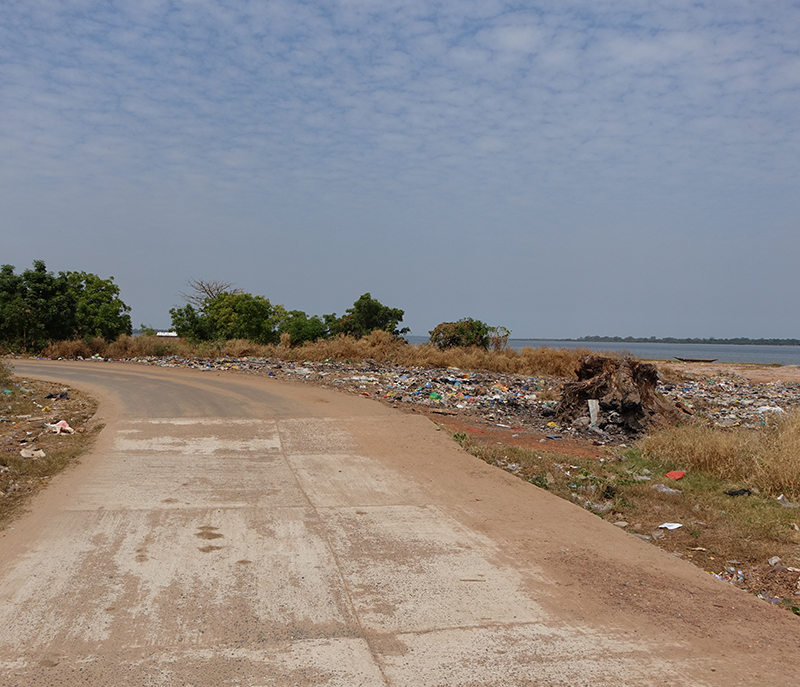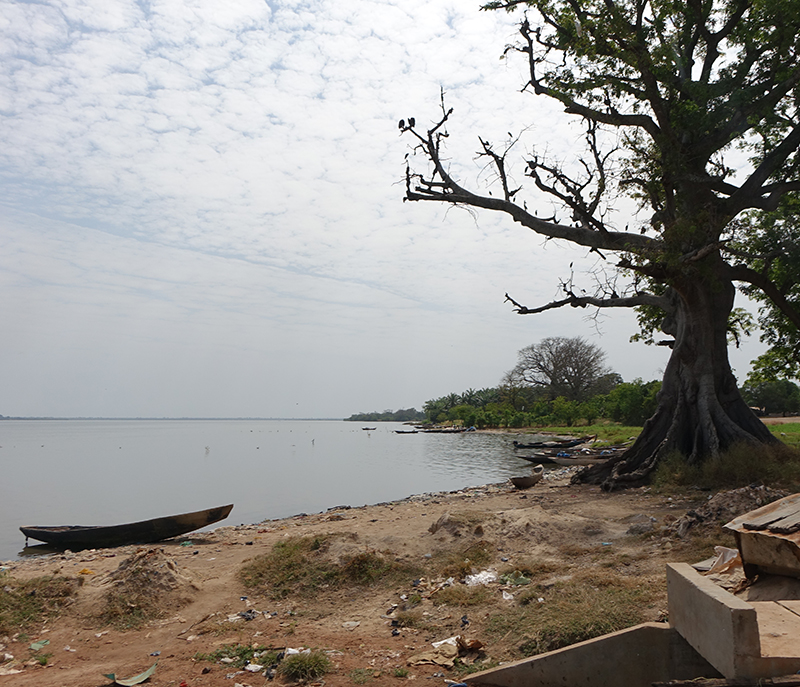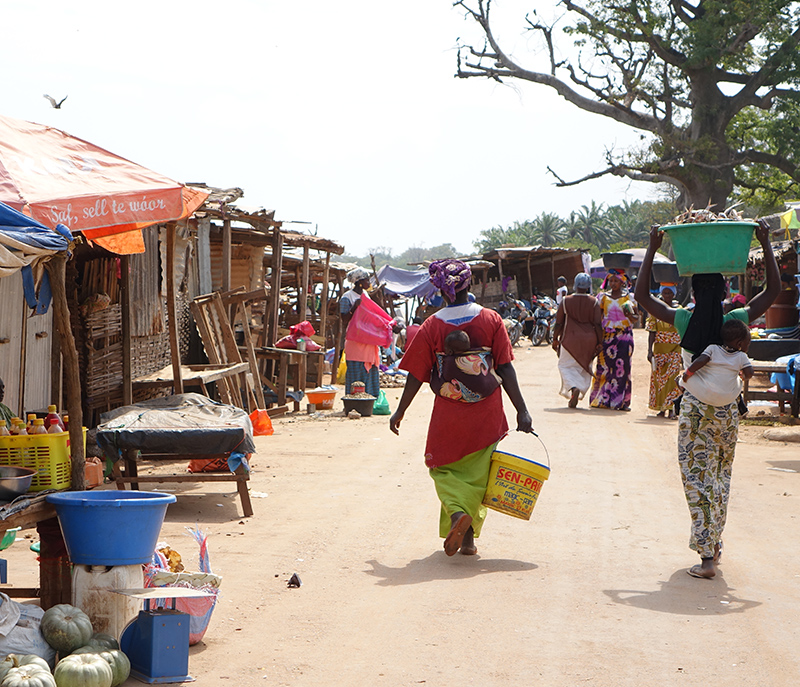Competition Brief
“Peace is a dream, it can become a reality… but to build it we must be capable of dreaming.” (Nelson Mandela)
Intercultural hostility and the exploitation of resources on the African continent have triggered a succession of armed conflicts resulting in millions of innocent lives lost and refugees seeking hope in a better life elsewhere. Communities annihilated. Villages and cities torn to the ground. Nations in chaos.
Remembering the victims through the universal value of peace can help to lay the foundation for the creation of an inclusive and cohesive society. Contemplation, memory, and compassion are the values that commemorative architecture must convey in order to build a better world.
Theme
The area in question was scarred by the Casamance conflicts which, despite having ended approximately a decade ago, left an indelible stain on the community’s memory. Villages were burned to the ground and many families were forced to flee to other countries or cities in search of safety. As in the case of the aforementioned conflict, many are the humanitarian disasters that, due to cultural or religious differences or in an effort to grab Africa’s resources, have caused millions of deaths and created innumerable refugees. Many of these conflicts, despite their devastation, are ignored by the international community and occasionally, due to the lack of communication on the African continent, remain unknown even among African communities themselves. Past events, albeit tragic, must inspire us to build a world based on peace, equality, and solidarity. Commemorating the victims of African wars through the value of peace is a fundamental step in building an inclusive and cohesive society, so that such events may never be repeated in the future. The focus of this competition is to create a pavilion for the promotion of universal peace which inspires contemplation, reflection, and prayer for those who unjustly lost their lives. The architecture of the pavilion must create a multifunctional space in which it will be possible to mount permanent and temporary exhibits by artists who share the values of peace and historical memory, but also a place where individuals can retrace and learn about Africa’s history through photographs and documents. Knowledge and sharing are essential elements for transforming the pavilion into a beacon of awareness. Furthermore, an area will be created in which to contemplate what happened, by praying for the victims or reflecting on the past, immersed in a metaphysical space that gives proper significance to memory. The pavilion will be open to the public and accessible to everyone. It will respect all cultures, genders, and religions.
Prizes
1st prize
4.000€ - Construction - Internship at Kengo Kuma & Associates in Tokyo
2nd prize
1.000€ - Pubblication on the book and magazines - Certificate
3rd prize
500€ - Pubblication on the book and magazines - Certificate
1 Honorable Mentions elected by Kengo Kuma
150€ - Pubblication on the book and magazines - Certificate
1 Honorable Mention elected by Balouo Salo
150€ - Pubblication on the book and magazines - Certificate
5 Special Mentions
Pubblication on the book and magazines - Certificate
20 Finalists
Pubblication on the book and magazines - Certificate
All awarded teams will be presented with an official certificate from the competition.
All awarded projects will be published in the competition’s official book and on its website, transmitted to architectural websites and other architectural contexts, and displayed at architectural events. The projects may also be published in national and international architecture magazines.
Project Site
Sedhiou.
The Casamance region, to the south of Senegal, is named for the Casamance River, which cuts across the administrative regions of Ziguinchor, Kolda, and Sedhiou. The capital of this last region is the designated project area. The city of Sedhiou itself has approximately 22,000 inhabitants, with a total of 420,000 in the entire region, scattered about in numerous villages.
The primary ethnic groups are: Mandinka, Balantes, Diolas, Fula, Creol, Diahankey, and Mancangne. The Mandinka group is culturally characterised by the presence of the Griot, a figure that promotes African culture and recounts its historical events with the help of a musical instrument called a Kora.
As in the rest of Senegal, there are two primary seasons in Sedhiou: the dry season, from November to May, and the rainy season, from June to October, with approximately 1000-1150 mm/year of rainfall. During the dry season temperatures vary between 33°C and 45°C. Due to the recent drought, agricultural and fishing activities have decreased considerably, thus affecting families’ food stability.
The most well-developed financial sector in Sédhiou is agriculture. The primary crops are: millet, corn, rice, sweet potatoes, manioc, peanuts, mango, oranges, cashews, papaya, lettuce, carrots, and tomatoes. Despite this variety of food resources, the lack of infrastructure prevents producers from being able to expand their markets.
The healthcare system is wholly insufficient. In the entire Sedhiou region there is only one hospital with few operating rooms and relatively little specialised personnel. In the rest of the region heath and first aid centres are disconnected from each other. The healthcare system’s lack of organisation has a strong impact on child mortality (82%) and life expectancy (65 years) in the region. Poor hygiene is one of the primary causes of illness. Most of the population drinks water from non-purified and hand-constructed wells, with subsequent problems of dysentery and related illnesses. Malaria is one of the most widespread diseases in the region.
The illiteracy rate is about 50%, due in no small part to the lack of roads and transportation and to the low affordability of secondary schools.
The subsoil is characterised by a reddish laterite stone and by alternating layers of white sand and clay.
The primary forms of art in the region are music, dance, and dress making. There are also other minor activities related to artisan crafts.
The lot.
The project area is located along the bank of the Casamance River, on predominantly clay terrain and with a minimal slope. The lot is immersed in the the surrounding environment and natural landscape. It is bordered by the river on one side and the city on the other.
The surrounding area is in expansion and characterised by the presence of an unauthorised street market, the city’s main market, and various offices, as well as by the “Chambre de Métier”, which constantly hosts institutional meetings. Between the Chambre and the market lay the ruins of the old colony’s government headquarters with annexed blockhouse, today in a state of neglect. During colonial occupation the city of Sedhiou was the capital of Casamance.
The lot is partially bordered by some rice paddies located at the corner of the road along the river (Rue Corniche), which connects the riverbank to one of the city’s main squares, where the market is located. Standing out in the surrounding landscape are three large kapok trees (these days somewhat rare in the city) which, according to ancient tradition, may have mystical meaning.
From the riverbank it is possible to cross the river in a pirogue to reach the main settlements.
Not far from the project area, in the middle of Casamance River, is Devil’s Island, thus called by colonial explorers because of the mystical events that took place there. In fact, the island was once a place of spiritual retreat.



Join the competition
Register and design your peace pavillon
